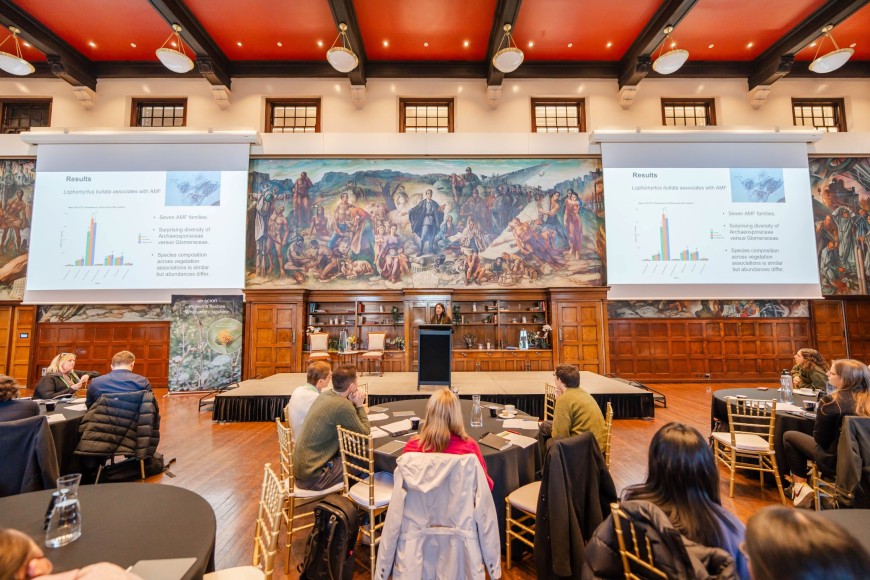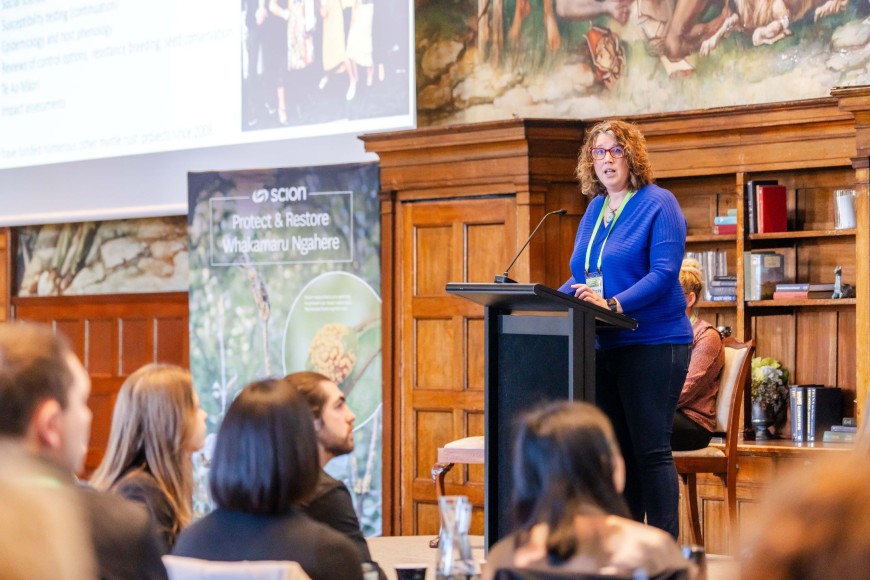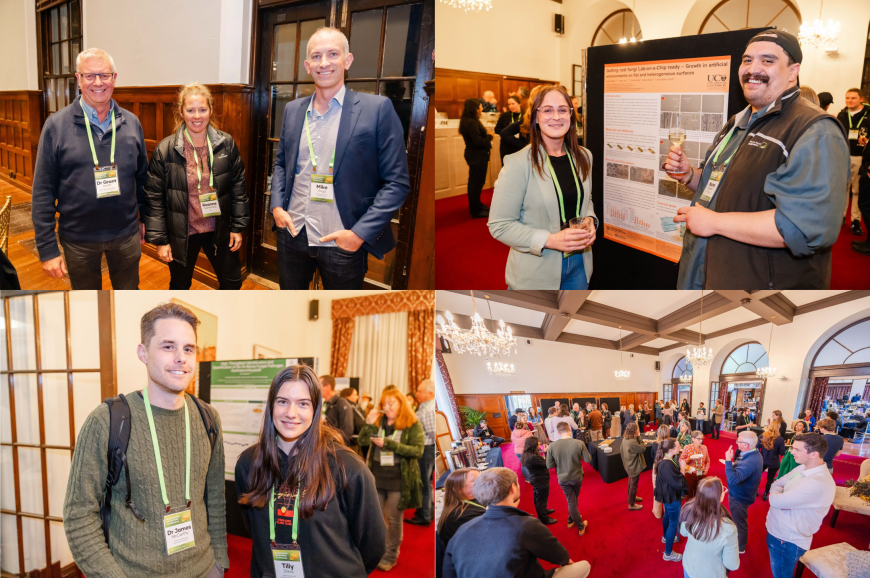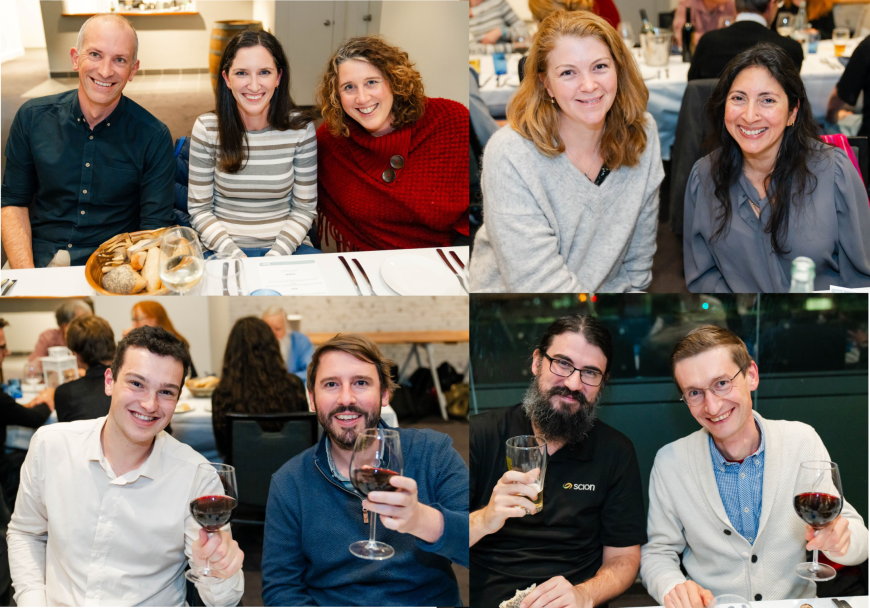Inaugural Australasian Myrtle Rust Conference – building connections
When the idea of having an Australasian Myrtle Rust Conference was floated in October 2022, no one could have known how big it would become.
“We had this idea that it would be good for the researchers in Australia to meet the researchers in New Zealand to talk about myrtle rust,” says Mahajabeen (Maj) Padamsee, programme leader for Beyond Myrtle Rust. “It was going to be a very informal thing, we thought there might be 30 or 40 people who would want to attend a meeting like this.”
Thanks to the team’s vision and ambition, as well as a substantial investment from the Australian government and investments from other groups especially in the form of travel grants, the event grew into a three-day conference with over 100 people in attendance.

Mahajabeen Padamsee, programme leader for Beyond Myrtle Rust. Photos by AMRC 2023.
The entire conference was dedicated to Austropuccinia psidii, the causal agent of myrtle rust.
“I’ve never been to a conference with such a specific focus,” says Maj. “Most have broad theme, like ‘ecology’. But this was a conference about a single pathogen and the effect it has on multiple other species. The fact that you could fill three days and still not cover the breadth of research being done is just incredible.”
Part of the science showcased at the conference was about understanding A. psidii as an organism. Its giant genome was discussed as well as its ability to adapt to many different environments. While these details were definitely interesting, some of the most exciting research shared was focused on possible solutions to protect against the pathogen.
“Based on the Australian experience, germplasm conservation should be the top priority for Aotearoa,” says Dr Beccy Ganley, Science Leader for the Ngā Rākau Taketake programme hosted by BioHeritage National Science Challenge. “It is essential for long-term management, conservation and restoration strategies.”

Dr Beccy Ganley, Science Leader for the Ngā Rākau Taketake programme.
Some seed storage and germplasm conservation efforts are underway in New Zealand, but the species that are trickiest to store are also the ones that are being hit hardest by myrtle rust. Beccy hopes that Australia and New Zealand will be able to share germplasm storage protocols for related species.
Another important tool in the long-term conservation toolbox is breeding for resistance. Dr Richard Sniezko from the USDA Forest Service presented at the conference, providing examples and methodologies that may be successfully used for highly disease-susceptible species.
“It became apparent at the conference and at the breeding for resistance workshop that followed that Aotearoa may already have many of the facilities, infrastructure and resources required to undertake a breeding programme for selected myrtle species,” says Beccy. “What was identified as lacking was national coordination and financial resourcing.”
Overall, Maj and Beccy agree that the conference was an exceptional showcase of research in the myrtle rust space.
“The atmosphere was really engaged,” says Maj. “And it’s great that the talks are available online to revisit.”
“The conference provided an opportunity to reconnect with previous myrtle rust colleagues as well as form new relationships with other researchers and agency representatives,” says Beccy. “These relationships are critical for the sharing of new methods of controlling and managing myrtle rust, as well as collaborative approaches to research and operational management.”
A hearty congratulations to the conference organizing committee, especially conference organizer Peri Tobias and the Australasian organizing committee: Renee Johansen, Angus Carnegie, Beccy Ganley, Stuart Fraser, Bob Makinson, Alyssa Martino, Mahajabeen Padamsee, Geoff Pegg, Grant Smith and Craig Stehn.
Videos of the conference presentations are available on YouTube.


